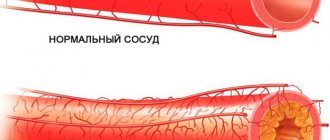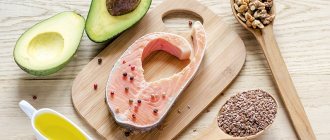Together with an expert, we find out why vitamin K is necessary for the normal functioning of the body, what its daily requirement is and how it interacts with other vitamins.
Vitamin K is a fat-soluble vitamin that comes in two forms. K1 is phylloquinone, found in green leafy vegetables, K2 is menaquinone, found in some animal products. It can also be produced by bacteria living in the human body [1].
The material was checked and commented by Shavkat Nurmatov, gastroenterologist, family doctor, therapist, endoscopist GMS Clinic
Vitamin K helps produce the proteins prothrombin and osteocalcin, which are necessary for blood clotting and bone building. It is found throughout the body, including the liver, brain, heart, pancreas and bones, and is quickly broken down and eliminated naturally. Due to these properties, this element rarely reaches toxic levels in the body even with high intake, as can sometimes happen with other fat-soluble vitamins.
Most people get enough of this substance from food. The recommended daily intake depends on gender and age [2]:
There are medications that affect the absorption of vitamin K in the body. These include antacids (heartburn medications), anticoagulants, antibiotics, aspirin, medications for seizures, high cholesterol and other diseases. They can destroy the bacteria that produce this element in the intestines, thereby potentially reducing its levels, especially if the medicine is taken for more than a few weeks.
Vitamin K is found in many vegetables and fruits, such as spinach, asparagus, broccoli, legumes, and strawberries. You can also get it by eating beef liver and chicken.
© SHUTTERSTOCK
What foods contain vitamin K and how to compensate for its deficiency
Mistake #1. Not monitoring vitamin D levels
Vitamin D
has a positive effect on insulin resistance and metabolism, the body’s ability to resist acute respiratory viral infections and oxidative stress, and reduces the risk of developing cancer and abnormalities in fetal development during pregnancy. Moreover, “sunshine” vitamin D helps not to feel depressed and reduces pain during childbirth.
In regions with low levels of insolation (including St. Petersburg), vitamin D deficiency is extremely common. However, you should not take it for preventive purposes, since vitamin D is still a steroid hormone. Only after a special laboratory blood test for D-hormone can you find out its level in the body, and then correct the deficiency.
Who is Vitamin D3 suitable for?
Adults and children of any age need cholecalciferol - only the daily requirement differs. But there are risk groups that need increased intake of vitamin B3:
- pregnant and lactating women (the norm is from 800 to 1200 IU per day);
- vegetarians and fans of low-fat diets;
- persons with excess body weight (fat deposits interfere with the absorption of the vitamin compound);
- women during menopause and postmenopause;
- men and women planning to expand their family;
- athletes who engage in strength sports;
- residents of northern latitudes, where there is little sun;
- those with naturally dark skin;
- aged people.
Acute vitamin D3 deficiency is observed in each of us during the cold season - from October to March. At this time there is little sun, which means that too little cholecalciferol is produced to cover the daily requirement.
How much vitamin to take
For preventive purposes, adults are recommended to take 600-800 IU of vitamin D3 every day. The duration of the course is several months - throughout the entire season with a reduced level of insolation (exposure to sunlight).
For medicinal purposes, vitamin preparations are taken as prescribed by a doctor after determining the level of deficiency. The optimal concentration of cholecalciferol in the blood is considered to be in the range from 40 to 80 ng/ml (100-150 nmol/l). In case of acute deficiency, the daily dosage of the vitamin can reach up to 200 thousand IU, but in this case, treatment is carried out under the supervision of a doctor.
You can suspect a deficiency of a vitamin compound based on the following signs:
- increased fatigue;
- frequent colds;
- muscle pain;
- bone fragility;
- hair loss;
- increased tooth sensitivity.
What types of vitamins can you buy?
Vitamin D supplements are available in several forms:
- Pills. Convenient to take, suitable for long courses (you can drink it long after opening the package). The tablet is protected from the aggressive action of gastric juice by a special coating. But there may be difficulties with dosing this form if the prescribed dose differs from that indicated on the drug.
- Solution. The vitamin is available in the form of emulsions, liposomes, oil-based or water-based compounds. The liquid form is easier to dose and is better suited for children than others.
- Capsules. Recommended for people with inflammatory diseases of the gastrointestinal tract. Capsules with dense or liquid contents do not irritate the mucous membrane of the stomach and intestines and do not cause side effects. The disadvantage of this form is the slow absorption of active substances.
- Jelly Bean. They have a pleasant taste, so they are suitable for both adults and children. But you need to take into account that the vitamin begins to interact with saliva while still in the oral cavity, so the effectiveness of the drug decreases.
To choose the best vitamin D for adults, you need to simultaneously consider both the dosage and the form of release. It’s good if one tablet/capsule/candy or measuring spoon will cover the daily dose of calciferol. A pleasant or neutral taste will be a good bonus.
Review of drugs containing vitamin D: summary table with prices
| Name | Price as of 2021 | Peculiarities |
| Aquadetrim | from 190 ₽ |
|
| Prime Kraft | 549 ₽ |
|
| Protein.Company, Vitamin D3 2000 IU | 899 ₽ |
|
| Minisan | 688 ₽ |
|
| Protein.Company, Calcium + Vitamin D3 | 699 ₽ |
|
| Wellness gummies Mixed Fruit | 1383 ₽ |
|
| Vitamir, Motherwort Forte D3 | 119 ₽ |
|
| Evalar, Vitamin D-Sun | 302 ₽ |
|
| Now Foods | 1189 ₽ |
|
| Arnebia | 239 ₽ |
|
| Cosmo–D3 | 562 ₽ |
|
| Natrol, Vitamin D3 5000 IU | 1249 ₽ |
|
Mistake #2. Taking calcium without normalizing vitamin D and magnesium
Calcium
- an important mineral that maintains the good condition of bones and teeth, is responsible for blood clotting and growth, and maintains muscle tone and nervous system. Sufficient calcium intake is necessary for the prevention and treatment of osteoporosis, as well as arterial hypertension.
But calcium is not absorbed if the body is deficient in vitamin D and magnesium. Taking calcium in this case is simply pointless.
The effect of nutrition on blood pressure
Many factors play a role in the development of hypertension. Not least of all is food. Blood pressure is affected not only by the composition of the diet, but also by a person’s eating habits, including how often they eat, how large the portions are, and how much fluid they drink.
A healthy, balanced diet is one of the conditions for maintaining a healthy cardiovascular system, normal heart function and optimal blood pressure levels.
There is a list of foods that increase blood pressure:
- Salt, additives, seasonings containing sodium: retain fluid, increasing its volume in the body, increasing the volume of circulating blood. Salt intake should not be too high even with hypotension. WHO recommends consuming no more than 5 g of salt daily (1 teaspoon).
- Products containing caffeine: coffee, green tea, cocoa. For example, strong sweet tea tones up and increases heart rate.
- High-calorie dishes. Baked goods, meat products, cheese, sweets, and high-fat dairy products provoke an increase in blood sugar, which causes blood pressure to rise. It is important for people with hypotension to eat foods that are nutritious enough, but they need to be careful that they are not excessively high in calories or contain too many carbohydrates or saturated fats.
- A large amount of water, watermelons, melons
Based on the mechanisms of increased blood pressure, nutritional principles have been developed:
The diet is significantly limited: table salt, nitrogenous extractives, animal fats and easily absorbed carbohydrates.
The diet should be enriched with potassium and magnesium salts, vitamins C, P and group B, vegetable oils, lipotropic substances (methionine, choline), dietary fiber (in bran, wholemeal bread, fruits, vegetables), and seafood rich in various minerals. substances and microelements, including organic iodine, B vitamins.
All food is prepared without salt, but in consultation with the doctor, it is allowed to add no more than 3-5 g of table salt to dishes.
To improve the taste of unsalted food, you can eat cranberries, lemon, prunes, jam, honey, sugar, vinegar, parsley, dill, cinnamon, citric acid, candied fruits, vegetable and fruit juices.
You can add yogurt, cumin, and anise to salt-free dough. When compiling a diet, you should also take into account the table salt content in the foods used for food.
Persons with arterial hypertension and excess body weight need to reduce the caloric content of their daily diet due to bread, sugar, cereal dishes, pasta and potatoes.
The total amount of free liquid (including first courses) is up to 1.5 liters. Main courses are prepared mainly boiled or baked or lightly fried after boiling.
Products useful for preventing arterial hypertension:
- raw vegetables, fruits and berries;
- foods rich in potassium salts (dried apricots, raisins, prunes, peaches, bananas, apricots, pineapples, rose hips, potatoes, cabbage, eggplants);
- foods rich in magnesium salts (soybeans, oatmeal, buckwheat, millet cereals; walnuts, almonds; bran);
- seafood containing organic iodine (seaweed, squid, scallop, shrimp, mussels, etc.),
- products containing a small amount of table salt (rice, oatmeal and semolina, cauliflower and white cabbage, carrots, beets, potatoes, pike perch, carp, pike, perch, beef, rabbit),
- foods containing large amounts of vitamin C (rose hips, black currants, strawberries, gooseberries, oranges, apples, cabbage, sweet red peppers, parsley, dill, green onions, etc.),
- products containing large amounts of B vitamins (bran, wholemeal rye and wheat bread, brewer's and baker's yeast, seafood, soy flour).
Mistake #3. Don't know what vitamin D to take
Cholecalciferol
- an inactive form of vitamin D, it is what is needed to correct its deficiency so that all body systems work properly and you feel good.
The drug cholecalciferol is safe - the likelihood of overdose is low. But there is another, active form of vitamin D - calcitriol
. It can only be taken under the supervision of a physician and for medical reasons.
Mistake #4. Taking vitamin D does not always mean normalizing its levels
Vitamin D is poorly absorbed in the following situations:
- Problems with the gallbladder (or rather, with bile outflow) - vitamin D is fat soluble, and bile is necessary for the absorption of fats.
- Inflammatory bowel diseases and microflora disorders.
- Excess weight
- D-hormone is deposited in adipose tissue, so obese patients need to take vitamin D in larger doses. - Genetic abnormalities - there are no receptors sensitive to vitamin D.
D or D3: which vitamin to choose
Scientists have identified 6 varieties of vitamins of group D - they are marked with numbers from 1 to 6. The most common compounds are considered:
- D2 – ergocalciferol;
- D3 – cholecalciferol.
Both types of calciferol have similar beneficial properties:
- serve as a prevention of rickets in children;
- strengthen bones, joints, hair and teeth;
- promote the absorption of calcium and phosphorus;
- slow down the growth of malignant cells;
- improve blood clotting;
- normalize reproductive function.
The D3 form has additional properties - it stimulates the transcription of RNA and DNA, improves digestion, and takes an active part in the metabolism of proteins and fats.
Ergocalciferol is formed in the cells of plants, fungi and yeast under the influence of ultraviolet radiation, and enters the human body along with plant foods. Cholecalciferol can be synthesized in our skin under the influence of sunlight. It is present in products of animal origin - sea fish, egg yolk, milk.
To understand which vitamin D is best for adult women and men to take, you need to remember the main differences between these compounds. D3 is considered a more natural vitamin for us; it is easier to absorb, metabolize and creates minimal side effects in case of overdose.
The health value of the D2 form is significantly lower, and is 25% less effective than vitamin D3. Therefore, the vast majority of dietary supplements and drugs contain cholecalciferol - as a more effective, safe and bioavailable form of vitamin D3.
Vitamin D3 intake standards
Preventive norms for cholecalciferol intake are established according to age and are calculated in international units (IU).
Table #1: daily intake of vitamin D3 for different ages
| Age category | Daily value in IU |
| Full-term babies from birth to 5 months | 500 |
| Premature babies from birth to 5 months | 800-1000 |
| Children aged 5 months to 4 years | 1000 |
| Age from 4 to 10 years | 1500 |
| Teenagers under 17 years old | 2000 |
| Adult men and women from 18 to 70 years old | 600-800 |
| Persons over 70 years of age | 800-1200 |
When choosing vitamin D3 - which one is better to buy for an adult - keep in mind that 1000 IU contains about 25 mcg of the active substance.
Mistake #5. Ignore Omega-3
Why take Omega-3
polyunsaturated acid? It preserves visual acuity, beauty and protects the vascular endothelium from damage. The brain is 30% composed of Omega-3 fatty acids. The substance is not synthesized in the body independently. Unfortunately, even adherents of the Mediterranean diet do not always get enough Omega-3. The fatty acid is found in fatty fish, flaxseed, sea buckthorn and mustard oils.
Adults should take 2 grams of Omega-3 daily—or more. The exact dosage can be selected after an analysis called the Omega-3 index
.
The advantage of Omega-3 capsules over the same red fish is the good purification of fatty acids from harmful impurities that we can receive along with fish caught in a pond.
Mistake #6. Do not distinguish between Omega-3 and Omega-6
Omega-3
and
Omega-6
are healthy and important unsaturated fatty acids for the body. However, there is no additional need to take Omega-6 - we get this component in sufficient quantities from food - vegetable oils, poultry, oatmeal, etc. Excess Omega-6 can play into the hands of inflammatory processes in the body.
Mistake #7. Ignore iron (ferritin)
Iron deficiency leads to anemia, fatigue, muscle weakness, dry skin, and hair loss. Women are at risk for iron loss due to menstruation; vegetarians and vegetarians do not receive the required amount of this microelement.
Mistake #8. Taking Iron Blindly
In terms of absorption, iron is a particularly capricious microelement. It should be taken with particular caution. The point is not even that the drug in drops stains tooth enamel. Excess iron is deposited in internal organs (liver, pancreas, thyroid gland), leading to serious disorders: hemochromatosis, cirrhosis, hepatitis, melasma (dusty bronze skin color).
Iron is poorly absorbed with dairy products and coffee.
On the contrary, vitamin C, B12, and folic acid contribute to the favorable absorption of iron.
If iron is poorly absorbed, the doctor prescribes special complexes
.
Mistake #9. Sports dietary supplements - trust and not test
Some athletes take proteins to accelerate muscle growth and “drying”. One of the most popular today is casein.
, which is made from ordinary cow's milk.
Casein protein is cheap to produce, but it is not suitable for everyone. Why is casein harmful? Once in the body, it turns into casomorphin
, which is addictive and can provoke inflammation of the intestinal mucosa, autoimmune diseases, swelling and lethargy.
Casein protein should not be taken by those who have problems with the gastrointestinal tract, as well as individual intolerance to lactose and casein.
Mistake #10. Not only collagen and hyaluronic acid are beneficial for the skin
After 35-40 years, the skin ages. Many women experience a lack of collagen peptides and hyaluronic acid: in this case, injection cosmetology and capsules come to the rescue as an auxiliary method of combating signs of age-related changes.
However, other components are also beneficial for the skin:
- Sex hormones;
- Vitamin C;
- Sulfur;
- Silicon;
- Iron;
- Zinc.
Consultation with an endocrinologist is a vector for your internal balance!
Liberanskaya Natalya Sergeevna
— endocrinologist, doctor of the highest category with more than 10 years of experience. Natalya Sergeevna sees patients with a variety of problems and issues within her specialization - excess weight, diabetes, thyroid problems, increased fatigue and drowsiness, pregnancy, menopause, metabolic disorders and endocrine glands.
Natalya Sergeevna is the author of the popular blog @doctor_liberanskaya, in which she regularly gives subscribers advice on maintaining health and therapy. All recommendations are based on the principles of evidence-based medicine and our own professional experience.
From 2021, Doctor Liberanskaya Natalya Sergeevna
accepts patients at the Pirogov Clinic - you can also undergo a consultation with an endocrinologist of the highest category.
To make the appointment informative and useful for you, we recommend taking the following tests:
- List of endocrinological tests
You can undergo the examination quickly, without queues and at a time convenient for you in our clinic.
Thanks to the latest diagnostic equipment and a team of qualified specialists from the laboratory of the Pirogov Clinic, you can be confident in objective and reliable results.
Criticism
The wave of publications about the healing properties of vitamin D in medical, semi-medical, and completely non-medical publications began about 30 years ago and shows no sign of abating. If you type “vitamin D” next to the name of any disease in an Internet search engine, you will find many articles about positive effects in treatment or the impact of vitamin D deficiency on the course of the disease. Here, for example, is a study showing that a lack of vitamin D can lead to a more severe course of coronavirus infection. But some experts do not agree with the absolute benefits of taking it.
“All statements about the direct effect of vitamin D on immunity, insulin and general well-being have nothing to do with evidence-based medicine,” says Vasily Vlasov, vice-president of the Society of Evidence-Based Medicine Specialists, Doctor of Medical Sciences. — There are no convincing, reproducible studies regarding the healing properties of calciferols in the prevention, much less treatment, of real diseases. Over the past two to three decades, there have been hundreds of articles about the successful use of vitamin D in the treatment of a variety of diseases: from baldness and impotence to strokes and hypertension. All of them have not been verified by subsequent clinical trials. Therefore, when similar articles now appear annually, the attitude towards them is quite skeptical.”
Severe vitamin D deficiency is often observed in a variety of diseases, such as obesity and type 2 diabetes. But doctors look at restoring normal levels differently.
“The importance of vitamin D for the body is just a fashionable topic,” says Alexander Lavrishchev, a therapist at the Semeynaya clinic. Several years ago, vitamin E was fashionable among hepatologists, after a series of publications on this topic. If a doctor wanted to look progressive, he had to try large doses of vitamin E on the patient. 90% of the Russian population lives with vitamin D deficiency. It is easy and inexpensive to synthesize, and if there is a huge market, then there is a big business. As a medicine, vitamin D is unlikely to be effective: I know of no cases in which a patient with an unclear illness would recover only by replenishing the deficiency of this substance.”
Olga Shamrina, who has repeatedly seen exhausted patients with a noticeable vitamin D deficiency, who had previously seen many doctors who had not found any pathologies, does not entirely agree with her colleague.
“If a person has no complaints, this does not mean that there is no vitamin D deficiency,” says the doctor. - You may never notice him. It’s just that sometimes you will be more tired than usual, have difficulty waking up, and sometimes react more forcefully to changing weather. A married couple who had seen many doctors before came to see me by chance. A 45-year-old woman had been unable to get pregnant for more than 3 years and was planning to do IVF. Vitamin D analysis showed that both spouses had a pronounced deficiency. After a short course of treatment with only vitamin D, everything went well. Now the child is already one and a half years old.”











